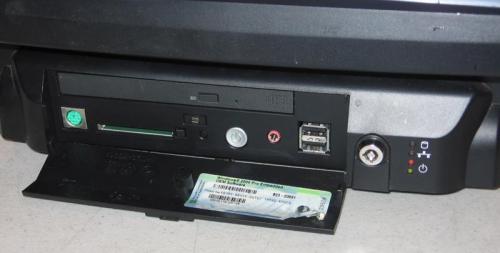
http://cgi.ebay.com/Touch-Dynamic-POS-T ... 286.c0.m14

Posting a product key doesn't harm, WIndows 2000 doesn't have activation.QuiescentWonder wrote:I didn't know that there wasn't proof, I have a 2000 Embedded COA myself. Funny how people post screenshots with product keys in them.
"Win2K Appliance Kit" sounds like that "Windows Powered" OS on the FTP.The Windows 2000 Embedded development efforts are gone. The new development group will deliver an embedded OS based on the upcoming Whistler OS, which will appear late in 2001; Microsoft will release the Whistler embedded OS about 90 days later. Microsoft will release a Win2K Appliance Kit and follow it with a high-end embedded OS release in about 18 months, delaying Microsoft's assault on the high-end embedded OS marketplace. The Win2K Appliance Kit will contain the same tools and technology that Microsoft used in IBM and Dell information appliances—customized versions of Win2K in which Microsoft has disabled, but not removed, parts of the OS to create a smaller footprint.
However, those are not componentized like the normal Windows XP Embedded. These versions (I have XP Pro for Embedded Systems) are bog-standard OEM versions including WPA etc. but sold with different licensing terms:MICROSOFT® WINDOWS® 2000 PROFESSIONAL FOR EMBEDDED SYSTEMS (1-2 CPU VERSION)
MICROSOFT® WINDOWS® XP PROFESSIONAL 64 BIT EDITION FOR EMBEDDED SYSTEMS (1-2 CPU)
MICROSOFT® WINDOWS® XP PROFESSIONAL FOR EMBEDDED SYSTEMS (1-2 CPU VERSION)
MICROSOFT® WINDOWS® XP PROFESSIONAL FOR EMBEDDED SYSTEMS—RUSSIAN VERSION (1-2 CPU VERSION)
MICROSOFT® WINDOWS® XP PROFESSIONAL FOR EMBEDDED SYSTEMS—SIMPLIFIED CHINESE VERSION (1-2 CPU VERSION)
In other words, no general purpose OS, just designed for one purpose (even though they can be used as such).2. ADDITIONAL LICENSING REQUIREMENTS AND/OR USE RIGHTS.
a. Specific Use. [OEM] designed this device for a specific use. You may only use the software for that use.
b. Other Software. You may use other programs with the software as long as the other programs
• directly support the manufacturer’s specific use for the device, or
• provide system utilities, resource management, or anti-virus or similar protection.
Software that provides consumer or business tasks or processes may not run on the device. This includes email, word processing, spreadsheet, database, scheduling and personal finance software. The device may use terminal services protocols to access such software running on a server